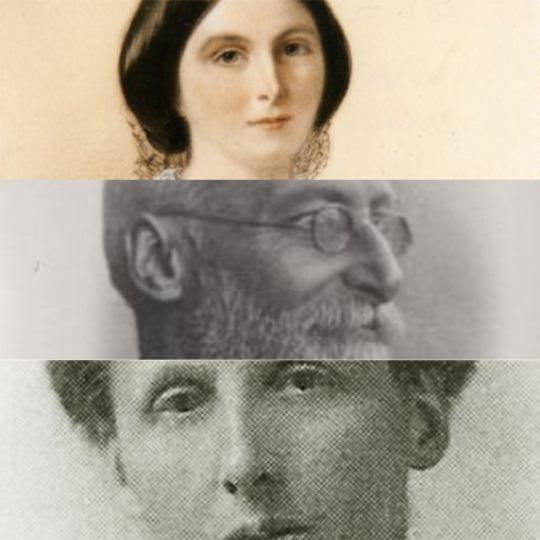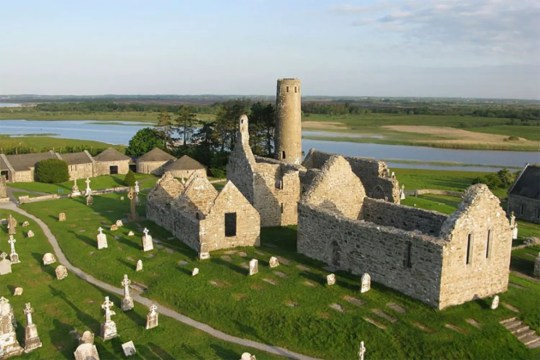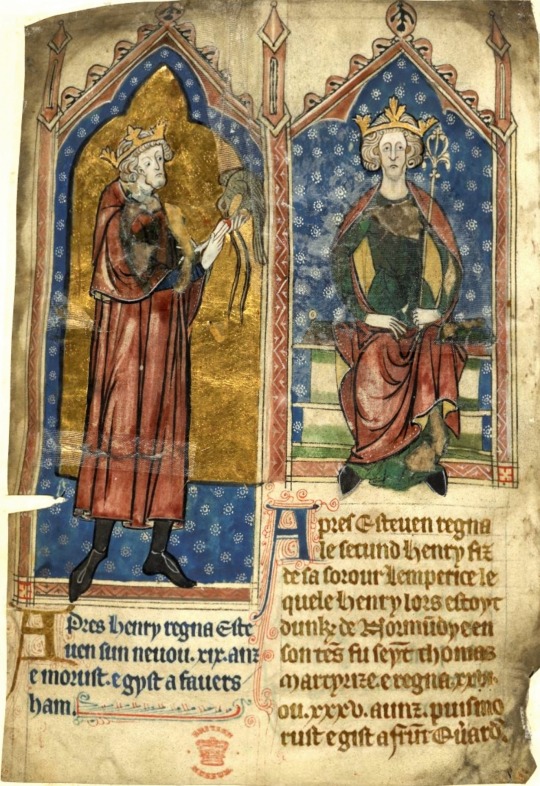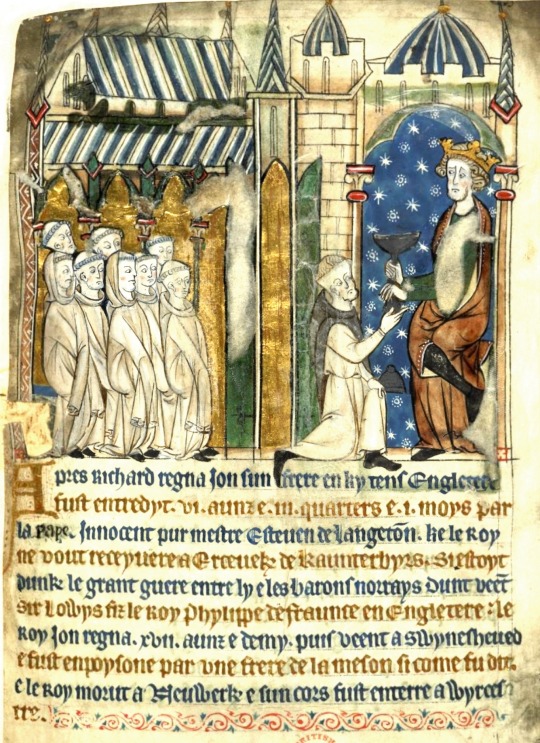#Normans
Explore tagged Tumblr posts
Text

Charlemagne anxiously observes the approach of ships carrying Norman raiders by Alphonse de Neuville
#alphonse de neuville#art#charlemagne#normans#raiders#francia#france#paris#french#vikings#viking#franks#frankish#germanic#carolingian#history#medieval#middle ages#europe#european#viking age#mediaeval#norman#pirates#marauders#raid#holy roman empire#holy roman emperor#françois guizot#carolingian empire
321 notes
·
View notes
Text
My OCs were Irish nobility during the Norman Conquest.
#dream#text#September 12th 2024#oc#original character#ocs#irish#ireland#irish nobility#nobility#norman conquest#normans
338 notes
·
View notes
Text










The signatures* of the monarchs of England/UK from 1066
*When there was no signature, I used their name as it appeared on a charter or letter from them.
The royal consorts
#I had a whole thing explaining who each person was in my other post but I think this one is pretty self-explanatory#mr bolingbroke what the hell is that#I think richard iii's is the most extra but victoria is a close second#elizabeth i's is not extra it is fabulous#elizabeth ii's signature looks so much like her mother's I thought I had the wrong one#I think that jane portrait is elizabeth but the one everyone uses is katherine parr so#normans#plantagenets#tudors#stuarts#hanoverians#windsors
357 notes
·
View notes
Text









The Irish Princess and her dynastic marriage to a Norman that helped shape Europe. Aoife, Princess of Leinster -> Catherine, The Princess of Wales. The Princess of Wales is Aoife, Princess of Leinster and Richard de Clare, Earl of Pembroke 26th Great-Granddaughter via her paternal grandfather’s line.
** Aoife or Eva, Princess of Leinster, played a pivotal role in the history of Ireland and the Norman expansion. She was the daughter of Diarmaid MacMurrough, King of Leinster, who sought the help of the Normans to secure his throne and defeat his enemies. As part of this alliance, Aoife married the Norman leader Richard de Clare, known as ‘Strongbow,’ on 25 August 1170. This marriage marked the arrival of the Normans in Ireland, just 104 years after their conquest of England by William the Conqueror.
Through their daughter, Isabelle de Clare, The 4th Countess of Pembroke, the union of Aoife and Strongbow forged a lineage that would shape the future of European nobility. Isabelle became an ancestor of nearly every reigning monarch across Europe. Within a few generations, her descendants included much of the European aristocracy, including all the Kings of Scotland since Robert the Bruce (1274–1329) and every monarch of England, Great Britain, and the United Kingdom since Henry IV (1367–1413).
Family Line
Aoife MacMurrough, Princess of Leinster and Richard de Clare, 2nd Earl of Pembroke. Painting of their wedding, depicting the political and cultural consequences.
Isabelle de Clare 4th Countess of Pembroke m. William Marshall 1st Earl of Pembroke.
Eve Marshall m William de Briouze, born Pembroke Castle.
Eve de Briouze m. William de Cauntelo, Coat of Arms
Millicent de Cauntelo m. Eon la Zouche, Coat of Arms
Eva la Zouche m. Maurice de Berkeley, 2nd Lord Berkeley, buried St Mary's Church, Portbury.
Thomas de Berkeley, 3rd Lord Berkeley m. Catherine Clivedon
Sir John Berkeley m. Elizabeth Betteshorne, burial location.
Eleanor Berkeley m. Sir Richard Poynings, burial tomb.
Eleanor de Poynings m. Henry Percy, 3rd Earl of Northumberland
Lady Margaret Percy m. Sir William Gascoigne
Anne Gascoigne m. Sir Thomas Fairfax - Gawthorpe Hall, family seat.
William Fairfax m. Anne Baker - Gilling Castle, family seat.
John Fairfax m. Mary Birch - Master of the Great Hospital at Norwich, Norfolk
Rev. Benjamin Fairfax m. Sarah Galliard - Preacher at Rumburgh, Suffolk.
Benjamin Fairfax m. Bridget Stringer - died in Halesworth, Suffolk.
Sarah Fairfax m. Rev. John Meadows - died in Ousedon, Suffolk.
Philip Meadows m. Margaret Hall
Sarah Meadows m. Dr. David Martineau
Thomas Martineau m. Elizabeth Rankin - buried at Rosary Cemetery, Norwich.
Elizabeth Martineau m. Dr. Thomas Michael Greenhow - died in Newcastle upon Tyne, Northumberland.
Frances Elizabeth Greenhow m. Francis Lupton
Francis Martineau Lupton m. Harriet Davis
Olive Lupton m. Richard Middleton
Peter Middleton m. Valerie Glassborow
Michael Middleton m. Carole Goldsmith
Catherine Middleton m. Prince William of Wales
*Catherine is also a descendant of Aoife via her mother Caroles maternal line.
#ktd#brf#british royal family#kate middleton#princess of wales#british royal fandom#History#history lesson#cultures#european history#women in history#strongbow#medieval art#historical#middle ages#medieval core#ireland#irish history#normans#Aoife#princess of Leinster
25 notes
·
View notes
Text






Castello Normanno-Svevo in Bari
#bari puglia#bari#puglia#apulia#italy#italia#southern italy#castello#castle#history#architecture#culture#travel#photography#travel photography#photographers on tumblr#12th century#medieval#medieval castle#normans#architettura#middle ages#medieval architecture#medieval art#dark academia#art academia#gothic#romanesque
27 notes
·
View notes
Text




“Haddon Hall is 900 years old, and it’s nestled in the landscape. You can almost hardly see Haddon. It’s burrowed into the tress and hugs the hill. It feels like a living organism. It feels like it’s got a sort of energy and beating heart.” - Lady Edward Manners. Haddon Hall in The World of Interiors, March 2025.
#england#uk#castles#medieval#aristocracy#Normans#architecture#english countryside#my sceenshots#screenshots#oceancentury
8 notes
·
View notes
Text

10 notes
·
View notes
Text

Making your way in the world today takes everything you’ve got. Taking a break from all your worries sure would help a lot. Wouldn’t you like to get away?
34 notes
·
View notes
Text
Clonmacnoise Monastery – Cluain Mhic Nóis | 'Meadow of the Sons of Nós'
This monastery is situated on the banks of the Shannon, it was founded in 544 AD by St Ciarán on a fertile meadow, or cluain, surrounded by bog. It could be reached only by river or along esker ridge known as the pilgrim’s road. The monastery flourished for 600 years as a centre of learning and religious instruction. It also supplied much of Ireland’s finest Celtic art and illuminated manuscripts…

View On WordPress
#Clonmacnoise Crozier#Clonmacnoise monastery#Cluain Mhic Nóis#Dervorgilla#Diarmait Mac Murchada#Dublin#History#History of Ireland#Ireland#Irish#Irish History#Lebor na hUidre#Meadow of the Sons of Nós#National Museum#Normans#Shannon River#St Ciarán#Strongbow#The Book of the Dun Cow#Tiernan O&039;Rourke#Vikings
19 notes
·
View notes
Text
The thing that gets me about the idea that Zootopia is in the same world as Robin Hood is that Zootopia is "Anytown, Anycountry, in the year 20XX" while Robin Hood is "Nottingham, England, Anno Domini 1194."


7 notes
·
View notes
Text

8 notes
·
View notes
Text








Pages from a 13th century manuscript with depictions of the kings of England from Edward the Confessor to Edward I, accompanied by brief summaries of their reigns, along with some highlighted stories.
Edward the Confessor receiving a divine apocalyptic vision from God during an Easter banquet.
Harold II being slain by William I at the Battle of Hastings.
William II, Henry I, Stephen, and Henry II are shown in simple poses with the dates of their lives and reigns.
Richard I first in his imprisonment in Austria, then his assassination at the hands of a boy with a crossbow.
John being poisoned by a monk at Swineshead Abbey (other accounts state that he dies of dysentery).
Henry III at his coronation, symbolically holding a miniature Westminster Abbey, which was lavishly rebuilt under his reign.
Edward I, then the current king, presiding over his court; the accompanying description was either lost or never completed.
#just stumbled on this and thought it was Neat#John does not like the look of that chalice#plantagenets#normans#anglo-saxons#manuscript
172 notes
·
View notes
Text

Bayeux tapestry stamps, commemorating the 900th anniversay of the Battle of Hastings
3 notes
·
View notes
Text

Bristol City Centre (Castle Park)
This image shows Castle Park (Image dated 1988) Once an area of medieval buildings and streets in the centre of Bristol which were blitzed in the 1940's during WWII and totally destroyed. This site is also the land on which the original Bristol Castle was built.
Bristol Castle was a Norman castle built for the defence of Bristol. Remains can be seen today in Castle Park near the Broadmead Shopping Centre, including the sally port. Built during the reign of William the Conqueror, and later owned by Robert FitzHamon, it later became an important royal castle and happened to be the scene of several imprisonments and executions. Several fortifications and additions to the castle were made between the 12th–13th century under Robert of Gloucester and King Henry III. It was mostly neglected by the 16th century and torn down in 1656 under orders from Oliver Cromwell. It was one of the largest Norman Castles ever built.
Now, as can be seen from this image it has become a recreational area for the city, with parklands, walks, and rest areas, retaining it's strong links with a troubled and historic past....
12 notes
·
View notes
